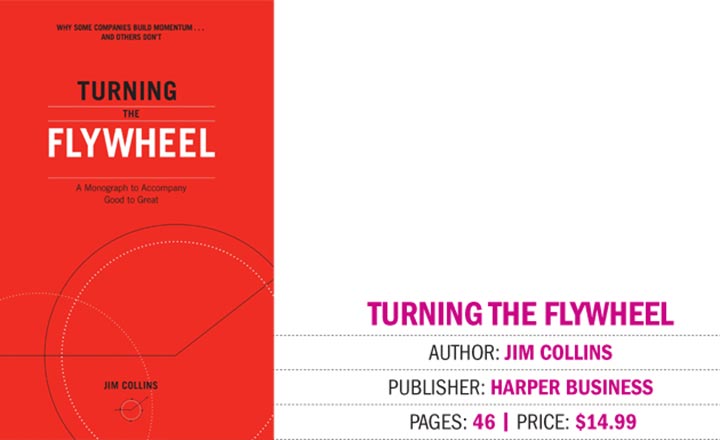"Beauty does not come from decorative effects but from structural coherence."
-Pier Luigi Nervi!
In the autumn of 2001, just as Good to Great first hit the market, Amazon.com invited me to engage in a spirited dialogue with founder Jeff Bezos and a few members of his executive team. This was right in the middle of the dot-com bust, when some wondered how (or if) Amazon could recover and prevail as a great company. I taught them about "the flywheel effect" that we'd uncovered in our research. In creating a good-to-great transformation, there's no single defining action, no grand program, no single killer innovation, no solitary lucky break, no miracle moment. Rather, it feels like turning a giant, heavy flywheel. Pushing with great effort, you get the flywheel to inch forward. You keep pushing, and with persistent effort, you get the flywheel to complete one entire turn. You don't stop. You keep pushing. The flywheel moves a bit faster. Two turns ... then four ... then eight ... the flywheel builds momentum ... sixteen ... thirty-two ... moving faster ... a thousand ... ten thousand ... a hundred thousand. Then at some point-breakthrough! The flywheel flies forward with almost unstoppable momentum.
Once you fully grasp how to create flywheel momentum in your particular circumstance (which is the topic of this monograph) and apply that understanding with creativity and discipline, you get the power of strategic compounding.
Each turn builds upon previous work as you make a series of good decisions, supremely well executed, that compound one upon another. This is how you build greatness.
The Amazon team grabbed onto the flywheel concept and deployed it to articulate the momentum machine that drove the enterprise at its best. From its inception, Bezos had infused Amazon with an obsession to create ever more value for ever more customers. It's a powerful animating force perhaps even a noble purpose - but the key differentiator lay not just in "good intent" but in the way Bezos and company turned it into a repeating loop. As Brad Stone later wrote in The Everything Store, “Bezos and his lieutenants sketched their own virtuous cycle, which they believed powered their business. It went something like this: Lower prices led to more customer visits. More customers increased the volume of sales and attracted more commission-paying third-party sellers to the site. That allowed Amazon to get more out of fixed costs like the fulfillment centers and the servers needed to run the website. This greater efficiency then enabled it to lower prices further. Feed any part of this flywheel, they reasoned, and it should accelerate the loop." And so, the flywheel would turn, building momentum. Push the flywheel; accelerate momentum. Then repeat. Bezos, Stone continued, considered Amazon's application of the flywheel concept "the secret sauce."
This is an extract from Jim Collins' Turning the Flywheel published by Harper Business











